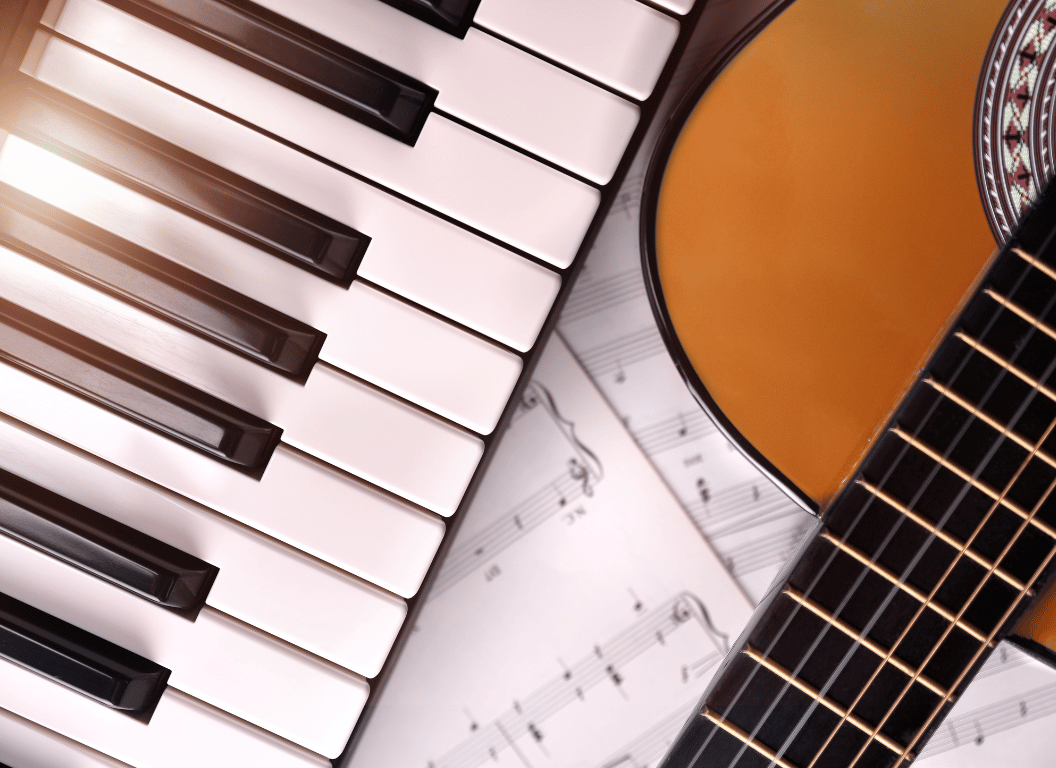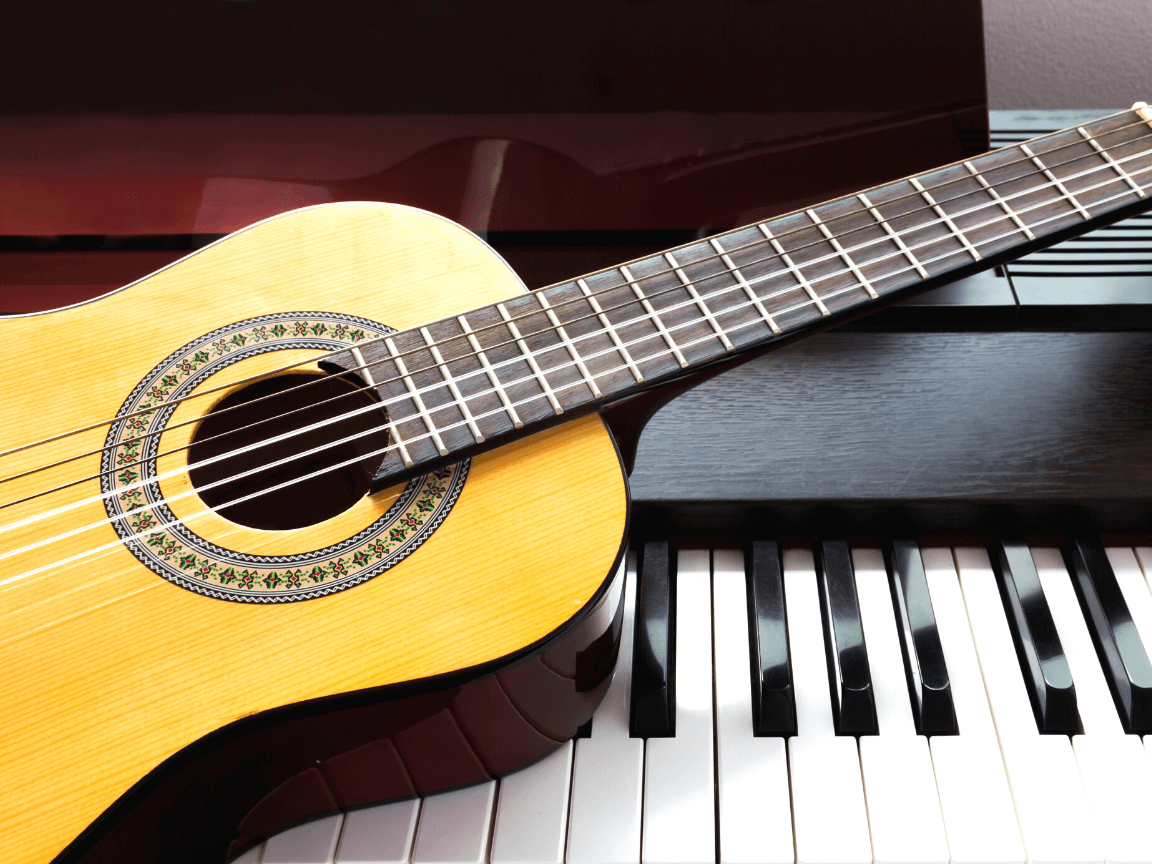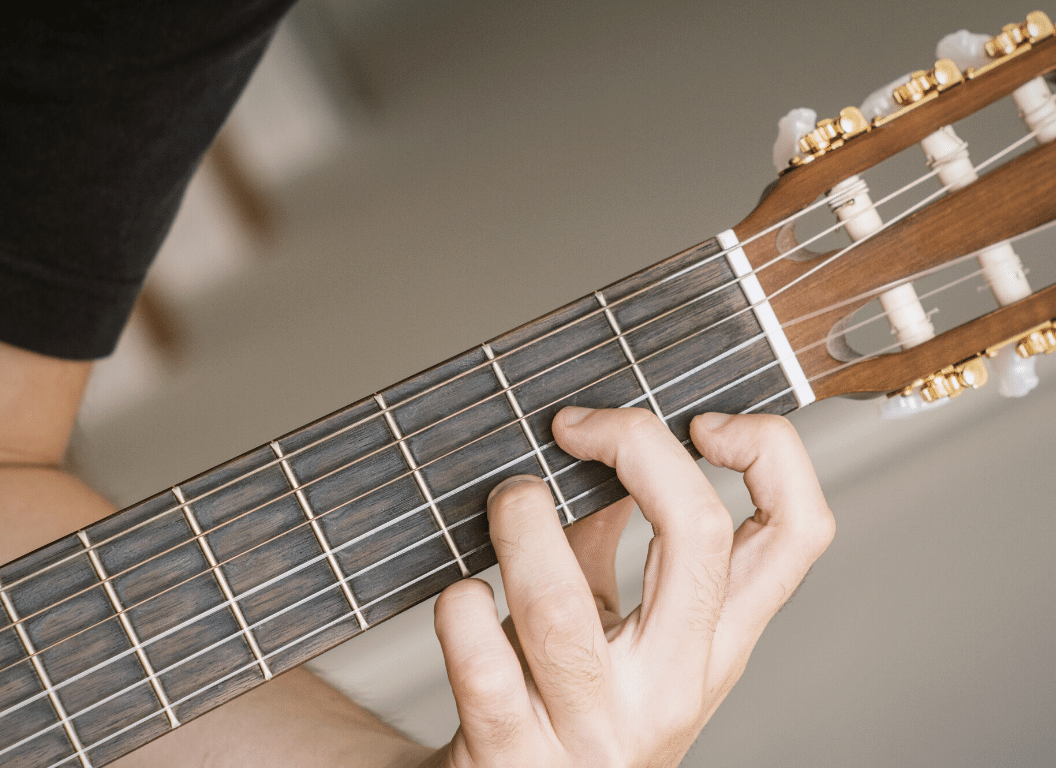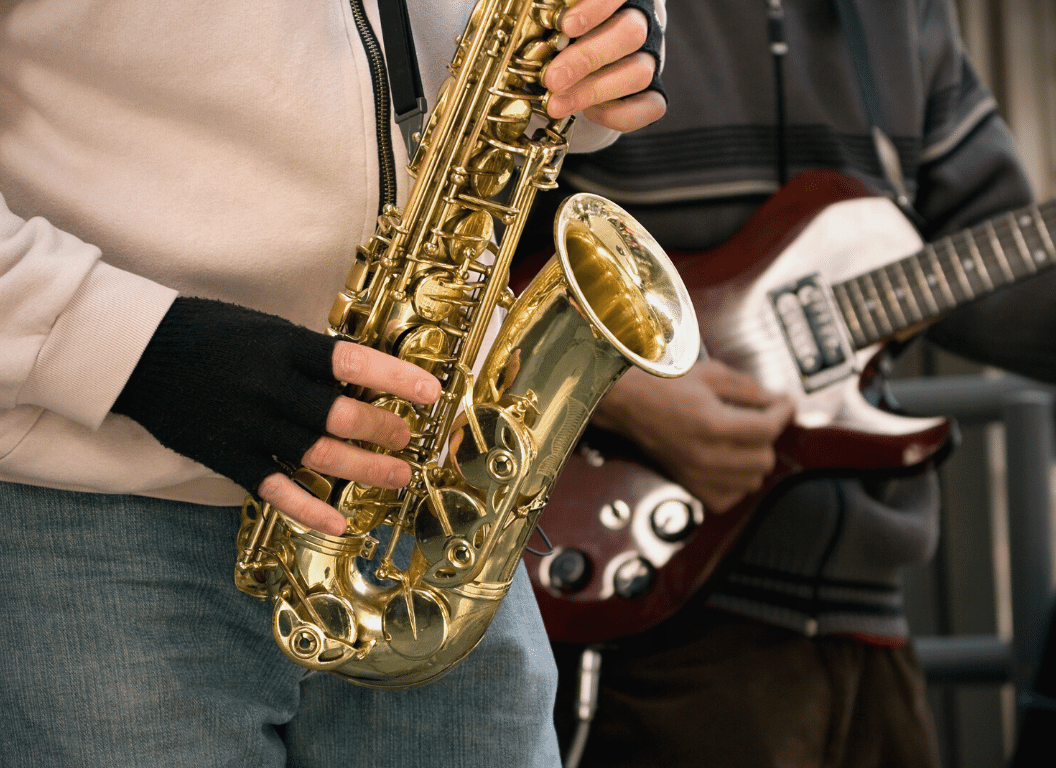Guitars and pianos are two distinct musical instruments, each with its unique sound, composition, and playing techniques.
Correspondingly, their music sheets are different as they are designed to guide musicians to depict the melody distinctly.
However, one may ask if it’s possible to use piano sheet music to play the guitar.
Bridging the gap between these two forms of sheet music can be a challenging but potentially rewarding endeavor.
It poses an intriguing exploration of versatility and adaptability in the music world.
This discussion revolves around unraveling this possibility and understanding the nuances involved.
Table of Contents
- Can You Use Piano Sheet Music For Playing Guitar?
- Understanding the Basics of Music Sheets for Piano and Guitar
- Key Differences between Sheet Music for Piano and Guitar
- Can Piano Melodies be played on a Guitar?
- Translating Piano Notes into Guitar Notes
- Role of Music Theory in Playing Piano Sheet Music on Guitar
- Possible Limitations of Using Piano Sheet Music for Guitar
- How to Use Piano Sheet Music for Guitar? Step-by-Step
- The Bottom Line
Can You Use Piano Sheet Music For Playing Guitar?
Yes, it is possible to use piano sheet music for playing guitar. However, it requires knowledge of music theory, as the guitarist will have to translate the piano notes into corresponding guitar notes. Additionally, it may not capture all elements of a guitar performance, such as strumming patterns and string bends.
Expanding upon this, it’s crucial to note that while it is feasible to convert piano sheet music to guitar, a variety of factors must be taken into account to preserve the integrity of the original piece.
This discussion will further delve into the intricacies of music theory and adaptation, such as the differences in pitch range between the two instruments, and the role that chords play in both.
It’s also worth exploring the unique elements inherent to guitar playing that sheet music primarily written for piano may not fully encapsulate.
As we venture further into these topics, you’ll gain deeper insight into the versatile world of musical translation and adaptation.
Understanding the Basics of Music Sheets for Piano and Guitar
Before diving into the complexities of translating sheet music from one instrument to another, it is crucial to understand the fundamentals of music sheets for both the piano and guitar.
Essentially, a sheet of music serves as a roadmap for the musician, guiding them on what notes to play, when to play them, and how long each note should be held.
Both piano and guitar music sheets present the same basic information but utilize some different symbols and notations based on the specificities of each instrument.
The Piano Sheet Music
Piano sheet music is basically written on the grand staff which consists of the treble clef and bass clef.
The treble clef represents the right hand notes, while the bass clef represents the left hand notes.
Each line and space on the staves represents a white or black key on the piano, or in other words, a certain musical note.
Additional symbols like sharps(#) and flats(b) represent black keys.
Each key corresponds to a unique pitch, meaning the frequency of the sound wave emitted when the key is struck.
The Guitar Sheet Music
When it comes to guitar sheet music, it is typically written on a single staff in the treble clef.
The lines and spaces once again correlate with specific notes, but this time to the open strings of the guitar: E, A, D, G, B, E.
If the notes appear above or below the staff, they are performed on frets on the neck of the guitar.
Apart from the traditional notation, guitars also have tablature or ‘tab’, a unique form of musical notation designed with six horizontal lines each representing a string on the guitar.
This makes understanding and playing guitar sheet relatively easier for beginners.
Though these may seem like a lot of particulars to keep in mind, they are all part of the fundamental knowledge that builds a strong foundation for further advanced music learning.
Both piano and guitar music sheets present the same basic information but utilize some different symbols and notations based on the specificities of each instrument.
This quote underscores the importance of awareness and understanding of these differences for any musician wishing to transition from playing piano scores on a piano to doing so on a guitar.
Knowing the basics will minimize confusion and help in a smoother transition when attempting to translate piano notes into guitar notes.
This informative video enlightens novices on how to read guitar sheet music efficiently.
By watching this tutorial, players can discover various symbols and notations specific to guitar music sheets and learn methods of swiftly recognizing and interpreting them.
Key Differences between Sheet Music for Piano and Guitar
Understanding the differences between sheet music for piano and guitar is fundamental to any endeavor to translate one into the other.
These differences emerge from the intrinsic qualities and features of the two instruments.
One of the main distinctions is that piano sheet music is written in both the treble and bass clefs, whereas guitar music is primarily written in the treble clef.
The reason for this is linked to the range of the instruments.
The piano, being a versatile, full-range instrument, is capable of playing both high and low notes with equal ease.
The guitar, however, predominantly operates within the higher ranges.
Subsequently, each clef in the piano sheet music represents a different hand.
The upper (treble) clef represents the right hand, while the lower (bass) clef represents the left hand.
Each clef has its own set of notes, producing a harmony of sounds when played simultaneously.
In comparison, as guitar music is written solely in the treble clef, all the notations relate to the same set of six strings.
Thus, the sheet music depicts what string and fret to play to produce the desired note.
Piano sheet music is written in both the treble and bass clefs, whereas guitar music is primarily written in the treble clef.
This difference in notation significantly impacts how songs and melodies are transcribed and played across the two instruments.
Piano players typically have a more extensive range at their disposal due to the instrument’s low and high ends.
Can Piano Melodies be played on a Guitar?
The ability to play piano melodies on a guitar is not only possible but also very common among musicians.
Guitars and pianos operate on the same fundamental principles of music, including pitch, harmony, and rhythm.
Essentially, any melody played on the piano can be played on the guitar.
Pitch and Octave Transposition
When translating piano melodies to guitar, one of the most important steps involves transposing the pitch and octaves.
This is necessary due to the different ranges of these two instruments.
The guitar has a smaller range compared to the piano, thus certain piano melodies may need to be transposed to a suitable octave.
The same pitch on a guitar may sound an octave lower than on a piano due to the guitar’s standard tuning.
The guitar has a smaller range compared to the piano, thus certain piano melodies may need to be transposed to a suitable octave.
Comprehending this aspect of transposition is essential for a musician who wishes to play piano melodies accurately on a guitar.
Otherwise, the resulting sound may not resemble the original melody due to the pitch difference.
Harmony and Chord Translation
Our next point of interest is the translation of harmonies and chords from piano to guitar.
A chord on the piano is played by hitting multiple keys simultaneously, which can be replicated on the guitar using a particular fingering pattern on the fretboard.
However, translating chords from piano to guitar is not always straightforward, as some piano chords require complicated finger placements on the guitar.
Moreover, because of the unique layout of the guitar fretboard, guitar players often have the option to play the same chord in various positions, called chord inversions.
This can add an interesting element of diversity to the translation process.
Translating chords from piano to guitar is not always straightforward, as some piano chords may require complicated finger placements on the guitar.
The chord translation requires a solid understanding of the notes in each chord, as well as some knowledge of guitar chord diagrams or tablature.
An accurate chord translation ensures that the melody retains the original harmonic texture when played on the guitar.
For a more detailed understanding, consider watching the embedded video.
This provides comprehensive instruction on reading and understanding piano notes, which may help facilitate the translation to guitar.
Rythm and Expression
The aspect of rhythm and expression in playing piano melodies on a guitar is another crucial point.
Pianos have a sustaining pedal that allows notes to ring out, creating rhythmic and expressive nuances.
Guitars, on the other hand, do not have a sustain pedal but use techniques like string bending, vibrato, and sliding to add expressiveness.
This difference may necessitate some nuances in the rhythmic interpretation of the melody when translated to the guitar.
It is these differences in complexity and expression that make the transition from piano to guitar an intriguing yet rewarding challenge for many musicians.
Translating Piano Notes into Guitar Notes
In tackling how to translate piano notes into guitar notes, understanding the concept of musical notation is crucial.
When you look at a piano sheet, the notes are written on a stave – a set of horizontal lines.
Guitar notes, however, are typically showcased as tablature.
Understanding Staves and Tablatures
An important step in translating piano notes to guitar notes is to familiarize oneself with the concepts of staves and tablatures.
In essence, staves represent the pitch and duration of musical sounds, while tablatures show where the notes are played on the guitar fretboard.
It’s crucial to note that the stave does not indicate which strings you should play on a guitar, unlike a piano, where each note corresponds to a specific key.
On the other hand, tablature is a more direct method, as it visually guides the player on where to place their fingers on the neck of the guitar.
However, a downside to tablature is that it does not provide clear information on the rhythm or length of each note.
Tablature is a more direct method, as it visually guides the player on where to place their fingers on the neck of the guitar.
This unique attribute of tablature makes it a handy tool for translating specific piano notes to guitar.
However, it’s not without limitations, and understanding the rhythm will likely require a combination of listening to the song and understanding standard notation.
The Process of Translation
To translate piano notes to guitar notes, start by identifying the corresponding notes on a piano and a guitar.
Given that both instruments use the same musical language – the chromatic scale – the essential difference will be the physical interpretation of these notes on the two instruments.
For a majority of popular music, you will likely encounter a melody line (usually written in treble clef) and accompanying chords.
In such a case, translating from piano to guitar involves interpreting the chords for the guitar while determining the best way to play the melody line.
This process may involve some adjustment in the octave or key of the song to fit within the range of the guitar.
To translate piano notes to guitar notes, start by identifying the corresponding notes on a piano and a guitar.
As every note on the piano corresponds to a note on the guitar, it further means that you can play a song in its original form, assuming the guitar has the necessary range.
That said, additional factors come into play – the guitarist’s skills, the guitar’s tuning, and the song’s complexity.
Role of a Midi Transcriber
Another method of translating piano notes to guitar notes comes through the use of MIDI transcribers.
MIDI stands for Musical Instrument Digital Interface, and it refers to a standard code that computers and musical instruments can use to communicate with each other.
A MIDI transcriber can take a MIDI file (which can be made from a piano performance) and then translate it into sheet music or tablature for the guitar.
This method is particularly useful if you have advanced music computer software and a suitable MIDI keyboard for the piano.
However, it’s important to remember that MIDI transcriptions may require adjusting for a more natural guitar phrasing.
A MIDI transcriber can take a MIDI file made from a piano performance and then translate it into sheet music or tablature for the guitar.
While this technique can ease the translation process, it does not replace the need for a fundamental understanding of music theory and notation.
This is because, despite the efficacy of MIDI transcribers, they cannot address issues like interpretative phrasing or expressive dynamics, which are better grasped through a standard understanding of music notation and performance techniques.
Role of Music Theory in Playing Piano Sheet Music on Guitar
Understanding music theory is fundamental when trying to play piano sheet music on a guitar.
With a basic knowledge of music theory, a musician has the ability to break complex notes down into their basic parts.
This ability enables them to translate piano notes into guitar notes effectively.
One essential aspect of music theory is understanding how notes on a piano key relate to those on a guitar fretboard.
Equipped with this knowledge, you can decipher sheet music meant for the piano and apply it to the guitar.
Understanding the Notes
Music notes for the piano and guitar, despite being different instruments, share the same musical alphabet.
Both instruments use the basic seven musical notes, which are A, B, C, D, E, F, and G.
Therefore, a note written as C on the piano would correspond to the C note on the guitar and vice versa.
In effect, with a proper understanding of this relationship, a guitarist can play sheet music initially intended for the piano.
With a basic knowledge of music theory, a musician has the ability to break complex notes down into their basic parts.
This ability enables them to translate piano notes into guitar notes effectively.
Further to this fact, knowing how to draw connections between the piano and the guitar improves flexibility as a musician.
Chords and Scales
Another important aspect of music theory is understanding chords and scales.
Both the piano and the guitar use similar mechanisms regarding chords and scales, albeit portrayed differently on their respective instruments.
Chords are grouped notes that are played simultaneously, and scales are sequential steps of notes.
One might argue that knowing how chords and scales work for both instruments is the key to translating piano music to guitar.
If you watch this video, you’ll learn an easy way to build and understand chords.
It also demystifies some complex aspects of music theory, potentially making your journey of translating piano sheet music to guitar smoother.
Possible Limitations of Using Piano Sheet Music for Guitar
Piano and guitar are two completely different instruments, each with a unique set of strengths, limitations, and technical aspects.
The difference in their playing mechanisms poses some challenges when trying to use piano sheet music for guitar.
Range Limitation Issues
One of the noticeable limitations is in the range of the instrument.
Pianos have a wide range, allowing musicians to access a wide range of tones simultaneously.
On the contrary, guitars have a more restricted range, making it difficult to reproduce the rich harmony and complexity of some piano pieces.
Both instruments are capable of producing stunning music and beautiful harmonies, but the piano’s extensive range does give it an edge over the guitar when it comes to playing more complex pieces.
Both instruments are capable of producing stunning music and beautiful harmonies, but the piano’s extensive range gives it an edge over the guitar when it comes to playing more complex pieces.
This implies that certain harmonic techniques and voicing, usually incorporated in the piano sheet music, might not translate completely or effectively on a guitar.
Simultaneous Note Playability
Another significant limitation is the “playability” of simultaneous notes.
Pianos allow the player to play many notes simultaneously, something that is somewhat restrictive on a guitar.
Since guitars have a different fingering structure, some chords or note combinations may be impossible or very difficult to play.
Furthermore, the guitar’s unique limitation in the number of simultaneous notes that can be played adds to the complexity of using piano sheet music for guitar.
Since guitars have a different fingering structure, some chords or note combinations may be impossible or very difficult to play.
Therefore, in scenarios where the piano music involves playing multiple notes at once, the guitarist may face difficulties in reproducing the same on their instrument.
Transposition of Keys
The requirement of transposing keys can also be a limitation.
Piano music is typically written in a key that is comfortable for the pianist, but this might not be the case for a guitarist.
This could demand the need for transpositions in order to suit the guitar’s tuning, which can complicate the already challenging process of adapting piano sheet music for guitar.
Moreover, these transpositions can alter the character and color of the piece, resulting in a different musical output than what was originally intended in the piano sheet music.
This could demand the need for transpositions in order to suit the guitar’s tuning, which can complicate the already challenging process of adapting piano sheet music for guitar.
Factors such as range limitation, playability issues, guitar’s fingering structure, and requirements of transpositions are essential considerations while using piano sheet music for guitar playing.
How to Use Piano Sheet Music for Guitar? Step-by-Step
Ready to utilize piano sheet music to improve your guitar playing?
Let’s dive into this practical step-by-step guide.
Step 1: Understand Sheet Music Symbols
Initially, it’s vital to understand the symbols found in piano sheet music.
These symbols are universal and apply to the guitar as well.
Note lengths, rests, clefs, time signatures, sharps, and flats are just a few symbols you will encounter.
Understanding these will ease the process of translating piano notes to guitar notes.
These symbols are universal and apply to the guitar as well.
This fundamental knowledge forms the foundation for effectively using piano sheet music for guitar playing.
Without it, you may find yourself confused and unable to progress.
Step 2: Determine the Musical Key
Next, you need to determine the musical key of the piece.
The key gives you an overview of what notes and chords you will likely play.
This step is vital as it will guide your finger positioning on the guitar.
Remember, the key signatures for piano and guitar are the same, making this a straightforward step.
The key gives you an overview of what notes and chords you will likely play.
When learning how to read piano sheet music for the guitar, knowing the musical key will help you anticipate the notes and chords, thus improving your performance.
Step 3: Translate Piano Notes to Guitar Notes
With a good grasp of musical symbols and key signatures, you can now begin translating piano notes into guitar notes.
You’ll commonly find the melody line in the treble clef, which is something that can be played on the guitar.
However, it’s essential to note that the bass line in the piano cannot always be translated due to the guitar’s limited range compared to the piano.
By watching this video, you’ll get a clearer sense of how to go about interpreting chord symbols on the piano for guitar.
Familiarizing yourself with these symbols will immensely aid your translation efforts.
Step 4: Incorporate Chords and Rhythm
Finally, once you’ve mastered translating single notes, you can move on to incorporating chords and rhythm.
Piano sheet music often provides chord symbols above the staff, which can be used to create a more full sound on the guitar.
Additionally, understanding the rhythm and tempo markings on the sheet will help you add the required feel and emotion to the piece.
Piano sheet music often provides chord symbols above the staff, which can be used to create a more full sound on the guitar.
By bringing together all these elements, you can transform a simple melody into a rich, layered guitar performance that stays truthful to the original piano piece.
It might seem complicated at first, but with patience and diligent practice, using piano sheet music as a tool for your guitar playing becomes an attainable goal.
The Bottom Line
Mastering the ability to utilize piano sheet music for playing the guitar is a skill that stands to significantly ramp up a musician’s repertoire.
Although there exist some limitations and differences inherent in the structure and playability of these two different instruments, understanding how to interpret and adapt piano melodies for guitar isn’t an insurmountable challenge.
With a solid grounding in music theory, practice and the application of specific techniques, a guitarist can broaden their musical horizon.
Notably, several professional musicians have successfully employed these strategies, reinforcing the viability of translating piano sheet music to guitar.
Progress may be gradual, with the journey seemingly daunting at times, but the outcome is ultimately rewarding, extending a guitarist’s versatility and musicianship.
In love with guitars, and gear; expert in all things music! Been writing about guitars for about 5 years and counting. Born in the ’90s. Alma Mater: University of Havana. Always curious, trying to understand the world. #TeamFender




